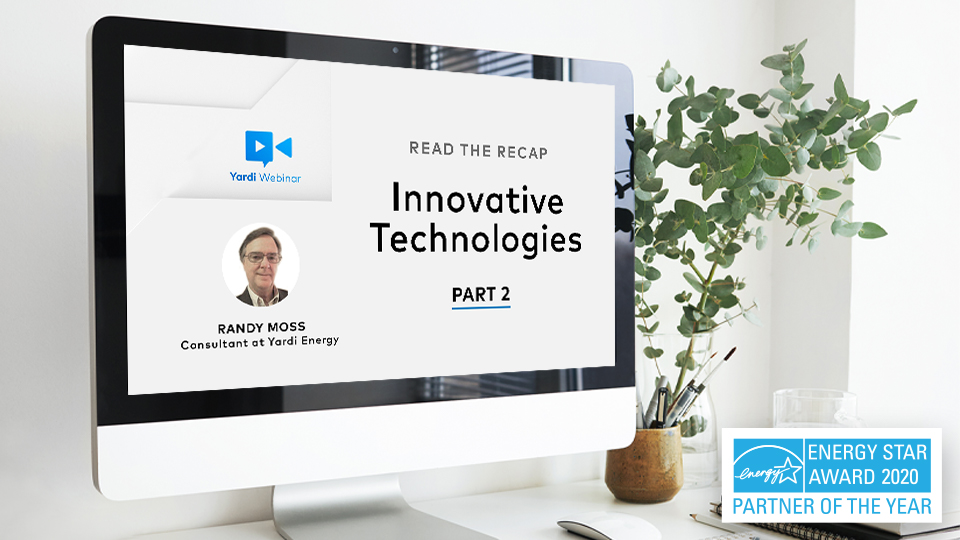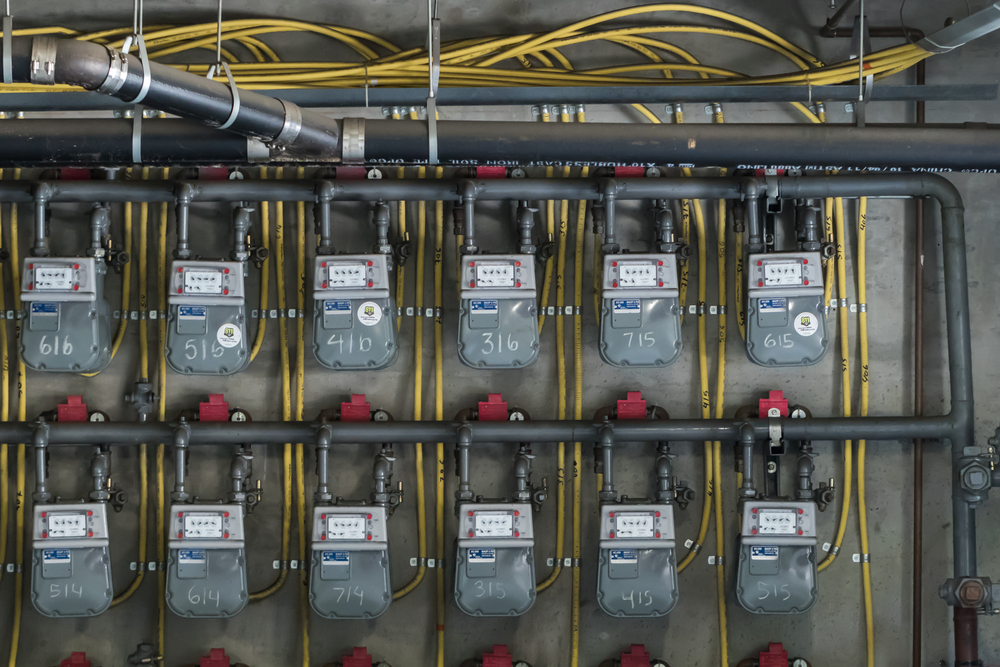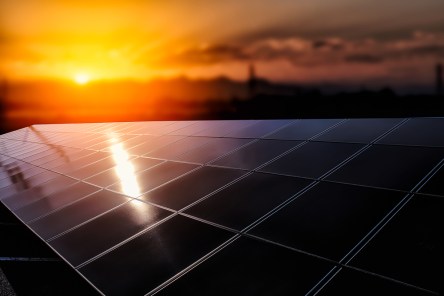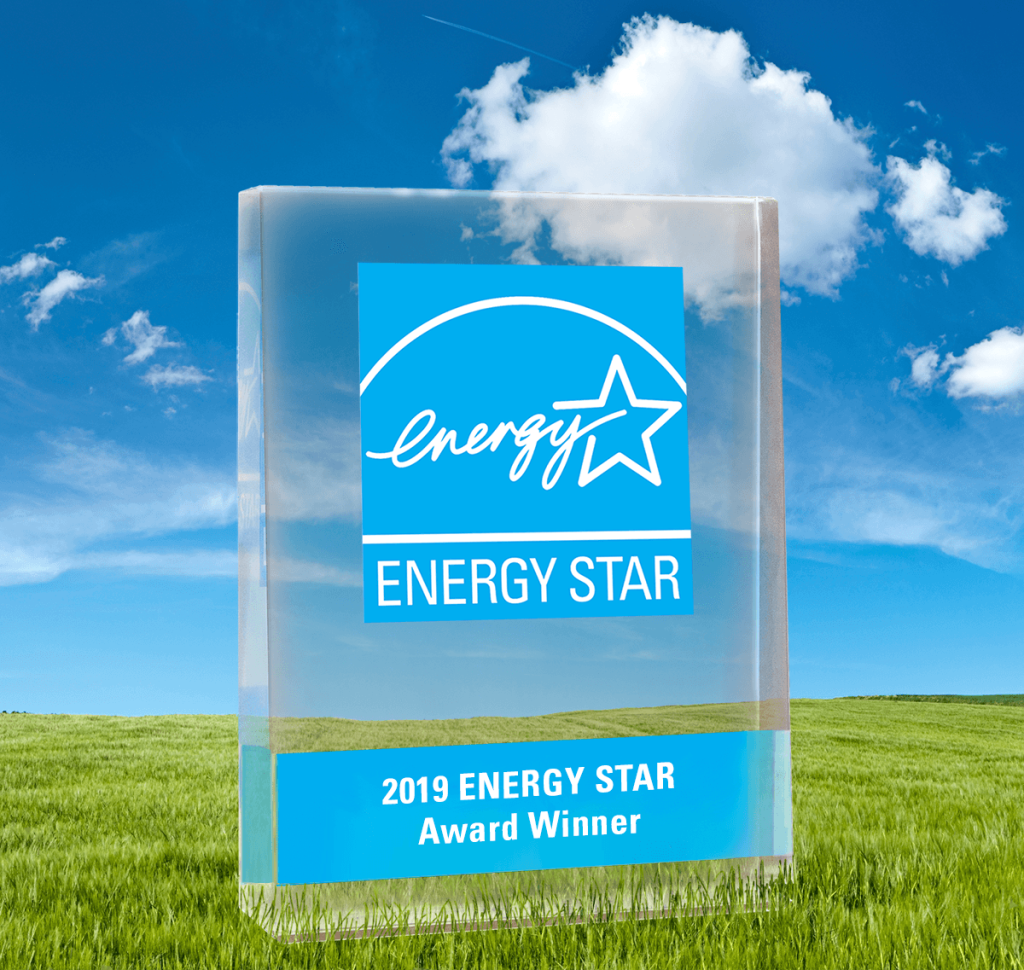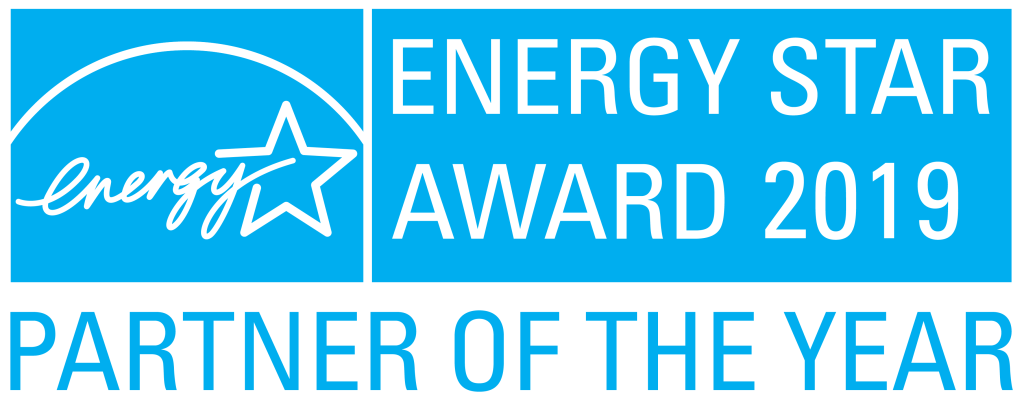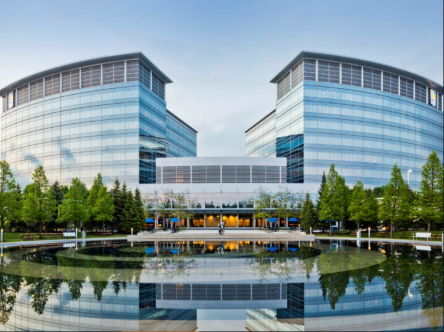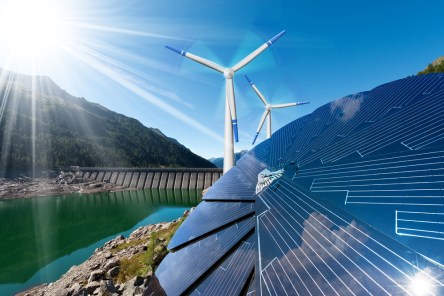It’s never too late to give an existing structure a greener lease on life. Retrofits offer commercial building managers an opportunity to improve efficiency and drive cost savings. If you’re just getting started, the four retrofit methods below are a great starting point for sustainable practices. Observe, benchmark and improve your energy consumption. Monthly bills are not enough to accurately determine the efficiency of a commercial site. Retrofits connected to the internet of things (IoT) provide real-time insights into energy consumption. Explore usage based on subleased portions or the entire building. What’s best, you can implement IoT retrofits at a speed that matches your budget. Commercial managers often begin with submeters. Submetering offers insights into building performance while facilitating average savings of 2-5%. Implement supportive technology such as energy benchmarking to help you meet compliance regulations for ESG platforms like ENERGY STAR®. Promote water efficiency regardless of your location. Dry, arid regions have long prioritized end-user water conservation. Interest has grown nationwide: efficiency offers economic benefits to all managers regardless of the site’s location. Retrofits for cooling towers and chillers are a great place to implement efficiency measures. Such retrofits will have the most notable impact since they can consume tens of thousands of gallons each day. Smaller projects, such as fixtures, may follow. Streamline HVAC operations to reduce waste and increase comfort. The efficiencies of HVAC systems decline naturally over time. Promoting optimal operation and occupant comfort requires consistent maintenance and smart controls. Networked controllers and cloud-based management software enable you to monitor and manage usage. Smart thermostats and monitoring technology can offer up to 30% energy savings while slashing future maintenance costs. Improve indoor air quality (IAQ). Americans spend about 90% of their time inside. Indoor air contains a higher concentration of...
ENERGY STAR Talks Tech
Webinar Recap
Utilities are the second highest controllable expense for property owners, so measuring and managing consumption is critical to control costs and minimize waste. The EPA’s ENERGY STAR® Partner of the Year Award Winner Webinar Series session on October 8 focused on innovative technologies (Innovative Technologies Part 2) for achieving energy efficiency. ENERGY STAR’s Stacy Glatting was joined by Dan Egan, senior vice president of energy and sustainability for Vornado Realty Trust and Randy Moss, ENERGY STAR benchmarking team lead at Yardi. Egan and Moss shared compelling data about energy costs and talked about tech that makes significant savings possible for real estate operators. The big picture Forward-thinking commercial building operators are implementing a variety of innovative technologies for energy management. Egan shared how Vornado has piloted induction unit valves at its buildings. Moss discussed how Yardi clients have achieved cost savings and maximized performance using a smart software platform that includes artificial intelligence to manage sophisticated building controls. Data analysis from Yardi — incorporating wasted consumption estimates from ENERGY STAR — shows that after MRO, utilities are the second highest expense for real estate firms, and they are controllable with the right solutions. Consider these statistics: Estimated annual spend across controllable expense buckets for 1M sq ft in a portfolio is around $1,980,000 The average commercial building is estimated to waste 30% of its consumption Potential savings equal $600k annually for every 1M sq ft in a portfolio “It’s a data-driven proposition for energy efficiency. We must not only evaluate energy consumption for our buildings, but also more granularly understand tenant consumption and landlord/base building consumption to identify drivers of efficiency,” explained Egan. He noted that the regulatory environment in New York City and the entire state compels companies to consider utility data sources such as the carbon intensity of the grid, hourly pricing (and carbon) signals and future transmission planning when evaluating different energy efficiency projects. “ENERGY STAR® Portfolio Manager® and ENERGY STAR® Tenant Space™ provide frameworks to obtain and monitor these types of data,” added Egan. ENERGY STAR Tenant Space is a new EPA recognition for sustainability in leased office spaces. Vornado Realty Trust’s energy goals Vornado is the largest owner of LEED-certified property in the U.S. and is a member of the Climate Group EP 100. According to Egan, Vornado’s “Vision 2030 Roadmap” includes a total energy reduction goal of 50% with same-store portfolio. In 2019, the company reported progress toward that goal with a 24% reduction in energy use. “Energy efficiency goals must be a tenant partnership,” said Egan. Considering the company reported about 60% of electricity costs are recovered via tenant submeter, that’s no understatement. Egan offered these takeaways after discussing the company’s approach to energy management: Innovative technologies are sometimes tried-and-true solutions that are repackaged with automation and informed by good data to support their value One must understand energy data at different points of the supply chain (from source to end use) to understand the value streams to add to the solution stack Energy efficiency and GHG emissions reductions are often correlated but not always, and rarely linearly Regulation and market signals will drive efficiency further and shift the focus towards electrification Yardi Pulse for energy management Yardi’s Moss talked about managing energy and achieving sustainability using connected and responsive technology. For a complete energy management strategy across your portfolio, you must automate utility invoicing with the ability to mine and validate invoice data, benchmark sustainability, get real-time meter insights and detect system faults as they occur through constant monitoring. With regard to best practices, an energy management system built into your property management platform to combine all your operational data will deliver the best results. Yardi Pulse enables commercial real estate operators to manage energy intelligence and automate energy equipment to lower costs, reduce consumption, keep tenants comfortable and improve efficiency from one connected platform. Plus, Yardi Pulse loads data into...
Retail Rewards
Macerich + Pulse
The sustainability framework that leading retail property owner, operator and developer Macerich operates under calls for eliminating energy waste and nearly eliminating emissions, water waste and landfill impact. Evidence of Macerich’s success in translating these “Innovating to Zero” principles into best practices includes a No. 1 GRESB Benchmark ranking for four years running among North American retailers and a Top 30 onsite generation designation in the U.S. Environmental Protection Agency’s Green Power Partnership. The Santa Monica, Calif.-based S&P 500 company has generated 16 megawatts of grid relief and saved more than 300,000 KwH annually with solar panel installations and LED retrofits. It’s the only U.S. retail real estate company to earn the highest “Climate A List” ranking from CDP (formerly the Carbon Disclosure Project), the world’s most comprehensive collection of self-reported environmental data. Another accolade came in the form of a Commercial Real Estate Digital Innovation (“Digie”) Award in the Most Intelligent Building Project category that Macerich received at the Realcomm ׀ IBCon conferences in June. Macerich recently marked another notable milestone: the 10-year anniversary of a multifaceted energy management sustainability program that has reduced the company’s environmental impacts while squeezing every ounce of efficiency from its operations. The company’s plan called for using advanced energy management software to combine internet of things data with additional logic and analytics functionality. The goal was to turn disparate charts, graphs and reports into coherent, actionable intelligence for operations teams and managers across 51 million square feet of real estate in 15 U.S. states. The software central to achieving that vision, the Yardi Pulse Suite, integrated Macerich’s central energy management systems with utility billing, energy data collection and the Yardi Voyager property management and accounting system. The suite enables connection, analysis and display of building information from Macerich’s...
Energy Education
Yardi Sponsors CHESC
Yardi didn’t have to venture far recently to share sustainability expertise with an audience eager for innovative energy efficiency ideas. The company provided top-level sponsorship plus an exhibit and speaker for the California Higher Education Sustainability Conference (CHESC), a forum for research and case studies at the University of California, Santa Barbara, just a few miles from its headquarters. The four-day gathering included more than 700 California higher education professionals including sustainability coordinators, construction, energy and environmental managers, engineers and facilities directors along with faculty and students. Experts from Yardi shared how the Yardi Pulse Suite, an integrated set of software solutions, supports sustainability efforts by helping reduce energy costs and consumption across all property types. They provided examples of the company’s success in helping property owners benchmark to ENERGY STAR® and make energy efficiency investments, and shared how Yardi promotes energy efficiency and sustainability through webinars, articles in trade publications, educational sessions at industry conferences and other activities. CHESC attendees learned that Yardi further displayed its sustainability sensibilities by achieving ENERGY STAR certification for its headquarters in 2018 and installing a real-time online dashboard that shows consumption data for each building at the corporate campus. In April 2019, the company’s initiatives earned designation as an ENERGY STAR Partner of the Year. “It is our hope that tools like ours will continue to help property owners and managers be more successful with energy initiatives and comply with new mandates like the California 2030 Green Building Goals,” Lexi Beausoleil, marketing campaigns specialist for Yardi energy solutions, told the conference, adding that technology can be a powerful tool for engaging people to “see the impact of their behaviors and empower them to make better choices.” Other presenters at the conference’s opening session included Dominique Hargreaves, deputy...
Climate Cleanup
New NYC Emissions Law
The Climate Mobilization Act is a package of legislation designed to drastically reduce carbon emissions from New York City’s commercial properties. It covers everything from closing high emitting power plants and installing renewable energy sources to limiting emissions from buildings of over 25,000 square feet. A major component of the proposal, Local Law 97 (formerly Bill 1253), was approved by the city council in April 2019 and focuses on greenhouse gas emissions limits for existing buildings. We asked Brian Fridkin, a Yardi Client Services Division team leader in Yardi Energy, for an analysis of LL 97. Q: How will this bill impact Yardi clients in New York City? Fridkin: Many clients who own or manage any commercial property of over 25,000 square feet will have to comply with the law’s carbon emission limits starting in 2024. That’s five years away, but they need to act now to meet the deadline. To comply, property owners will have to calculate their building’s carbon limit, which is based on the square footage of their building. They will then have to calculate their current emissions based on the emission coefficients set in the law. To avoid penalties, they will have to make reductions in the next five years that equal the difference between their emissions and limit. What’s more, the emission limits change every five years. The limits for 2030-2034, for example, are about half of those for 2024-2029. That’s good because property owners can ease into the changes, but they must constantly prepare for upcoming limits. Additionally, there are minimum requirements that a building must meet by 2024, which include adjusting temperature set points for heat and hot water, repairing system leaks, insulating pipes, ensuring steam traps are operating correctly, complying with lighting standards and weatherizing windows....
Real-Time Energy Management
Benefits Explained
Real-Time Energy Management (RTEM) systems continuously collect live and historical building performance data through a cloud-based system. Building owners can use this data to optimize the building’s energy consumption and show in real time how the property is performing. By reducing energy consumption, RTEM systems also help reduce greenhouse gas emissions and a building’s overall carbon footprint. This is particularly important to New York state property owners who, with the help of partners like Yardi, can qualify for incentives from the New York State Energy Research and Development Authority (NYSERDA), a public benefit corporation that promotes energy efficiency and renewable energy sources, when they install RTEM systems. Annette Durnack, regional director for Yardi Energy, explains how Yardi fits in with RTEM systems and NYSERDA. Q: What are the benefits of an RTEM system? Durnack: RTEM systems help building owners and operators manage energy consumption, so they can operate their buildings more efficiently and reduce energy consumption. They centralize energy usage tracking; monitor heating, ventilation, and air conditioning systems; and manage the scheduling and operation of building equipment. They detect equipment faults, so they can be addressed before they become failures or impact tenant comfort. They also help track the effect of energy conservation measures. RTEM systems can help improve ENERGY STAR® scores and contribute to LEED certifications. In the state of New York, properties that install an RTEM system through qualified vendors such as Yardi may be eligible for significant incentive funding through NYSERDA. Q: What kinds of RTEM incentives does NYSERDA offer building owners? Durnack: The NYSERDA RTEM program provides up to $300,000 per electric utility account via a 30 percent cost-share for projects submitted by qualified RTEM vendors. NYSERDA provides funding for the installation of RTEM hardware as well as the provision of software and ongoing services. Additional funding may be available for projects that demonstrate the integration of multiple interoperable systems or include a commercial tenant in the project scope. Q: How can Yardi help building owners obtain these NYSERDA incentives? Durnack: Yardi is an approved vendor for NYSERDA’s RTEM program, giving building owners the option of employing the Yardi Pulse Suite to improve their building’s performance and to qualify for RTEM project funding. Yardi submits all required project documentation to NYSERDA in order to qualify and secure the incentive. Once approval is obtained, Yardi offers a turnkey solution for installing and servicing an RTEM system. Q: What benefits can building owners expect from the Yardi Pulse Suite? Durnack: Our Pulse Suite includes several energy management software solutions that can help reduce your energy costs and consumption. Most Yardi clients experience HVAC energy savings in the range of 10-15 percent. Yardi Utility Expense Management, for example, provides access to all energy cost and consumption data, enabling emission calculations and contributing to benchmarking for ENERGY STAR® reporting. Yardi Pulse Real-Time Metering delivers visibility into real-time demand and consumption that can be used change how a building operates. Yardi Pulse Active EE optimizes HVAC system performance by making incremental changes to set points every 30 seconds, which reduces consumption while maintaining tenant comfort. Yardi Pulse Fault Detection and Diagnostics helps prevent HVAC system equipment failures before they cost money or impact tenant comfort. We also offer emission calculations consulting, renewable energy credit purchasing, and energy procurement services. Our Yardi energy experts can help you select the right solutions that will best meet your needs. Click here for more information on NYSERDA’s RTEM program. Download a Yardi Pulse brochure for more information on energy management software...
Sunset on Solar ITC
Step Down Begins 2020
This is the last year that businesses are eligible for the 30 percent federal investment tax credit (ITC) for solar—sort of. A few simple steps can position businesses take advantage of the solar ITC before step downs begin next year. The Tax Benefit Step Down Tax benefits have motivated sustainable upgrades over the past ten years. The 30 percent ITC was the most popular. The ITC “provides owners of solar systems with the ability to offset tax payments owed to the IRS in an amount equal to 30 percent of the eligible cost basis of a solar photovoltaic system,” summarizes Smart Energy Decisions. Beginning in 2020, however, the tax benefit will gradually decrease. The first step decline is to 26 percent for projects that “begin construction” in 2020. In 2021, the benefit declines to 22 percent. All projects starting in or after 2022 receive only 10 percent. “The good news is that there is currently a 30 percent ITC for the cost of the system for those installing solar before December 31st, 2019,” emphasized Ray Segars, CEM, consultant for energy and sustainability on Yardi’s energy team. He added, “The emphasis is on credit. This is a credit not a tax deduction. Tax deductions reduce taxable income, thus reducing associated taxes. Tax credits are more valuable because they reduce the actual tax bill dollar for dollar.” Gaining the Advantage on the Solar ITC Notice 2018-59 details strategies to help corporations navigate the step downs with financial finesse. Firstly, “beginning construction” is a surprisingly loose term. There are two ways that a project may begin and still qualify for the year’s tax benefit. The Physical Work Test entails beginning physical work on your solar project The Five Percent Test entails paying or incurring 5 percent or...
Standard of Excellence
Energy Star Awards
The U.S. Environmental Protection Agency’s designation of Yardi as a 2019 ENERGY STAR® Award recipient in the service and product provider category was previously announced in this space. The award recognizes the company’s outstanding contributions to protecting the environment through superior energy efficiency achievements. More than 180 organizations across a broad swath of industries joined Yardi in receiving ENERGY STAR awards in April. Some of their achievements that ENERGY STAR documented are summarized below. Along with saving more than 5.6 million kilowatt-hours from LED retrofit and solar programs, Chicago apartment community developer and manager AMLI Residential engaged its leasing staff to educate residents and prospective residents on the benefits of living in an ENERGY STAR-certified community. Boston Properties incorporated cost recovery for ENERGY STAR certification, sub-metering of high-intensity tenant equipment and tenant energy disclosure through ENERGY STAR Portfolio Manager® into its master lease form. The self-administered and self-managed real estate investment trust also achieved ENERGY STAR certification for 77 properties in 2018. Bozzuto Management Company of Greenbelt, Md., pursued 100% benchmarking in ENERGY STAR Portfolio Manager for all managed assets and achieved energy reductions of more than 3% and 2% in site and source energy usage, respectively, across its portfolio in 2017, which equates to a calculated energy cost savings of more than $4 million. The manager of more than 255 multifamily communities also communicates sustainability and ENERGY STAR issues through its internal Bozzuto in the Know program. CommonWealth Partners, a Los Angeles private real estate investment, development, management and operating company, developed an internal Battle of the Buildings Bootcamp competition that focused on empowering properties to reduce energy, water and waste over three months. The effort saved more than 12,000 megawatt-hours of energy, 16,000 kilogallons of water and more than 3,400 metric tons of carbon dioxide equivalent. Fairfax (Va.) County Public Schools, which serves more than 190,000 students, has saved more than $23 million since 2014 through a comprehensive energy program. The 10th largest school division in the U.S. also enacted student-conducted home energy audits, a Battle of the Buildings competition and extensive promotion of ENERGY STAR and energy efficiency through social media. Hudson Pacific Properties, a vertically integrated real estate company in Los Angeles, implemented an engagement and recognition program that recognized properties that achieved the largest ENERGY STAR score improvement, hosted the best tenant engagement event and demonstrated the largest reductions in energy, water and waste usage. Los Angeles-based Kilroy Realty Corporation received ENERGY STAR Charter Tenant recognition for one of its offices and promoted ENERGY STAR in an innovative TEDx talk. It also joined the BOMA W2 challenge, an initiative built with the support of a grant from Yardi, across 84 buildings. LBA Realty LLC achieved ENERGY STAR certification for 21 properties in 2018. The Irvine, Calif. office and industrial property manager and investor also increased its average ENERGY STAR score portfolio-wide from 78 to 81 and reduced its average weather-normalized source energy use intensity by over 5% from 2017-18. Memorial Hermann Health System of Houston saved more than 14 million kilowatt hours by retrofitting light fixtures. It also became the first healthcare system in Texas to utilize new ventilation rate standards that reduce energy use while still meeting air change rates set by the department of health. Principal Real Estate Investors LLC of Des Moines, Iowa, achieved more than 3% reduction in average weather-normalized source energy use intensity from 2017-18. The company has achieved more than $52 million in cumulative avoided energy costs and more than $137 million in potential increased asset value since 2008. Defense, civil government and cybersecurity solutions provider Raytheon Company designed and built an energy-efficient onsite data center that can be replicated at other sites, earning a top project award from its manufacturing peers. The Waltham, Mass.-based company also completed onsite battery storage projects at two facilities that help offset power consumption from the grid during peak periods. SL Green...
Global Partnership
Yardi + GRESB
Yardi has long supported the mission of Global Real Estate Sustainability Benchmark (GRESB), an Amsterdam-based limited private company, to improve real estate sustainability performance with environmental, social and governance benchmarking. The property management technology provider recently elevated its commitment by becoming one of just nine sustainability consultants and solution providers in GRESB’s Global Partner program. In this role, Yardi helps GRESB participants complete sustainability assessments, manage ESG data and advance ESG performance. The company will also collaborate with the organization’s industry, media and research partners to share sustainability best practices across the property management industry. GRESB works with the industry to define the global standard for sustainability performance in real assets, providing standardized and validated ESG data to the capital markets. More than 80 institutional investors, collectively representing more than $18 trillion in institutional capital, use GRESB data and analytical tools. In 2018 GRESB assessed 903 real estate funds and property companies, 75 infrastructure funds, 280 infrastructure assets and 25 debt portfolios. “GRESB members can use Yardi’s energy solutions to drive actionable environmental, financial and operational insights into their real estate portfolios and engage more closely with the investor community. These capabilities benefit our clients around the world, and we are pleased to extend them to an even broader community of real estate portfolio managers,” said Akshai Rao, vice president of energy and procurement for Yardi. A GRESB evaluation measures sustainability performance indicators including energy consumption, greenhouse gas emissions, water consumption and waste. A multi-layer validation process produces high-quality data that investors and participants can use in their investment and decision-making processes. “Real estate companies that establish and track a full range of ESG metrics achieve multiple tangible business outcomes for shareholders,” GRESB says on its website. In one recent project, S&P Dow Jones...
Energy Distinction
Yardi Awarded EPA Honor
Yardi has long been proud to provide energy-related technical services to clients with the aim of improving efficiency, lowering costs and meeting sustainability benchmarks. The company gained a measure of its impact this month in the form of an ENERGY STAR® Partner of the Year Award in the service and product provider category. The award signifies that Yardi demonstrates exemplary leadership, innovation and commitment to environmental protection by instituting ENERGY STAR values, tools and resources within the industry, and its own operations. Since 1992, ENERGY STAR and its partners have helped American families and businesses save more than $450 billion and over 3.5 trillion kilowatt-hours of electricity while also achieving broad emissions reductions. The EPA co-manages ENERGY STAR, a voluntary program that helps consumers and businesses save money and protect the environment through the adoption of energy-efficient products and practices. Past ENERGY STAR Partner of the Year Award recipients include familiar companies such as JPMorgan Chase & Co., Northwestern University and HP Inc. “This award reflects our clients’ success in using ENERGY STAR resources to achieve their corporate and community sustainability goals. We are proud of those achievements and look forward to helping our clients and the industry gain even more benefits from ENERGY STAR,” said Anant Yardi, founder and president of Yardi. “Energy efficiency is a core component of our mission as a real estate technology provider. We thank the EPA for this high honor and will continue applying technical innovation to current and emerging industry challenges,” said Akshai Rao, vice president of energy and procurement at Yardi. Yardi’s ENERGY STAR-related initiatives in 2018 that the EPA evaluated included: Benchmarking more than a thousand buildings in ENERGY STAR Portfolio Manager® in 27 compliance jurisdictions every month. Yardi also benchmarked other properties in non-compliance areas for other programs Documenting its real estate clients’ success in using energy optimization software to maximize efficiency and reduce costs. One example is SL Green, New York City’s largest office landlord, which used intelligent energy optimization software from Yardi to increase the ENERGY STAR score for one of its properties from 48 to 76. SL Green also won the 2018 Earth Building of the Year Award from BOMA NY Sponsoring the BOMA Water and Waste Challenge Program, which helps property managers track, gather and analyze data. Yardi solutions supported W2 participants by automating data capture and generating insightful reports. One client, Kilroy Realty Corporation, reduced water use at a Class A building by 30% Promoting ENERGY STAR value propositions like higher occupancy and rent, increased asset values, actionable benchmarking information and favorable impressions among investors. The company did this through webinars, industry trade shows and publications, client user conferences, executive briefings, corporate blog posts and other activities Earning ENERGY STAR certification for its corporate headquarters in Santa Barbara, Calif. Working with EPA to improve ENERGY STAR Portfolio Manager software functionality in such areas as building energy performance measurement and reporting Yardi will receive the ENERGY STAR Partner of the Year Award at a ceremony in Washington, D.C., on April...
What’s Your Energy Strategy?
Get These Five Benefits
Did you know that the average commercial building wastes 30% of the energy it consumes? Or that energy costs will rise as much as 60% in areas of the U.S. by 2028? It’s true, according to an analysis and calculation of Yardi consolidated property data. These facts should be red flags for property management companies without an energy strategy in place. Luckily, adopting an energy strategy is not as daunting as it may seem. In fact, taking incremental steps towards a comprehensive strategy can generate measurable savings in a matter of weeks with a relatively modest investment. Here are five reasons why an energy strategy is good business: Reduced costs Operating expenses such as utilities and maintenance are easy first targets for reduction through an energy strategy. By taking advantage of usage data and trends, property managers can quickly identify excessive usage, lower maintenance costs and identify benchmarks for energy consumption across a portfolio of properties. Increased value Assets that cost less to operate and generate higher rents quickly become more valuable. An energy strategy promotes both savings and revenue by reducing operating costs, reducing the need for rental concessions, making properties more marketable and, as a result, increasing potential net operating income. Efficient accounting The benefits of automating property management processes such as payment processing, procurement, vendor management, etc., are now viable for energy management. Gone are the days of a stack of paper utility bills waiting to be opened and paid. Automated utility expense management sends digital invoices to accounting staff and mines data from smart metering equipment to validate usage. With a relatively low upfront investment, property managers can reduce duplicate payments, avoid late fees and be confident that their utility spend is accurate. Happy tenants Doing business in a building that is LEED certified or meets ENERGY STAR® benchmarks can make a tenant feel proud, comfortable and socially responsible. They’re also less likely to call for maintenance with modern, energy efficient equipment servicing their building. That satisfaction reduces tenant turnover and increases competition for your space. Happy investors A successful energy strategy demonstrates to investors that your organization is proactively maximizing occupancy and revenue, and minimizing operating expenses. It’s also a great way to reassure investors that your properties are working to achieve local, state and federal government energy conservation goals, as well as boosting Environmental, Social and Governance scores for socially conscious investors. Need help getting started? Start with a focus on utility expense management as an approachable first step with low upfront investment required. From there, you may take bigger steps, such as energy intelligence at the property level with real time metering, ENERGY STAR benchmarking and prescriptive alerts for any property in your portfolio. The next level of investment is characterized by advanced energy automation in HVAC equipment, fault detection, diagnostics and demand management. No matter which level of strategy you take, the potential return on investment is tangible and may be evident as soon as your next utility invoice. Yardi Pulse clients have seen as much as 5% annual savings in energy costs with the first two incremental steps alone (utility expense management and energy intelligence). Annual energy savings of up to 15% or more are expected for properties that implement further energy automation measures. If you are a current Yardi Voyager user, contact our team for a complementary consultation. We’ll do an analysis to compare your costs with benchmarks. It’s a simple way to get an idea of the potential savings that an energy strategy can deliver to your...
Enlightened
Get Smart with Energy Facts
Enjoy some nuggets of energy intelligence courtesy of FactRetriever.com, Danish critical global challenges tracker The World Counts, the U.S. Energy Information Administration, and energy and home services provider British Gas. Humans began using energy sources other than fire about 5,000 years ago. In 1807 English scientist Thomas Young became the first person to use the word “energy” in the modern sense. The U.S.’s first natural gas well was dug in Fredonia, N.Y., in 1821. The first oil well followed in Pennsylvania in 1859. Thomas Edison built the first commercial central power plant. The Pearl Street Power Station in New York City sent electricity to more than 80 buildings in 1882. It served more than 500 customers within two years. Seventeen percent of U.S. electricity generated in 2017 came from renewable energy sources such as solar, wind and geothermal power. Biomass and waste fuels accounted for about 1.6% of U.S. electricity in 2017. The U.S. produces the most nuclear-generated electricity, nearly one-third of the world’s total. The second-largest producer is France, which generates more than three-fourths of its electricity in nuclear reactors. Lighting accounts for about 20% of U.S. electricity consumption. Only about 10% of the energy in a fluorescent light bulb creates light. The rest creates heat. Mexico’s Programa Luz Sustentable delivered four energy-efficient light bulbs to almost 6 million households in 2012. American inventor Charles Fritts built a prototype of the first solar cell in 1880. Enough sunlight reaches the Earth’s surface every minute to satisfy the world’s energy demands for a year. The global solar market grew by about 29% in 2017. The cost of solar power has dropped by approximately 60% since 2009. Buildings account for 36% of overall annual energy consumption in the U.S. and 65% of the electricity demand....
Energy Updates
News from EIA
The U.S. Energy Information Administration (EIA) collects, analyzes and disseminates energy information. The following items are drawn from recent postings on EIA’s Today in Energy news site. Consumption Rates Slow The EIA’s energy outlook report for 2019 projects that residential and commercial purchased electricity consumption will grow more slowly than the number of households or total commercial floor space. As a result, electricity intensity—the amount of electricity consumed per household or square foot of commercial floor space—will decrease by an average of 0.3% per year and 0.4% per year through 2050 in the residential and commercial sectors, respectively. The number of households will grow an annual average of 0.7% and total commercial floor space by 1% per year during that period. The projected rates are much lower than what occurred from 1990 through 2018, when electricity sales grew at average annual rates of 1.7% in the residential sector and 1.8% in the commercial sector. The growth slowdown stems in part from improvements in technology and federal energy efficiency standards for space heating, cooling and water heating equipment, appliances and items such as light bulbs. Electricity’s New Generation An EIA short-term energy outlook released in January forecasted that wind, solar and other non-hydroelectric renewable energy resources will be the fastest-growing sources of U.S. electricity generation for at least the next two years, Wind generation will grow by 12% and 14% in 2019 and 2020 and utility-scale solar generating units by 10% and 17% over that period. About 23.7 gigawatts (GW) of new capacity will enter the U.S. electric power sector in 2019 alone. Wind accounts for 46% of those utility-scale additions, followed by natural gas (34%) and solar photovoltaics (18%), with the remaining 2% consisting primarily of other renewables and battery storage capacity. New...
Green Growth
Can Financing Keep Up?
A green groundswell grips the multifamily industry, influencing everything from building materials to construction standards and certification systems. Green financing is no small part of this trend. As sustainability becomes further embedded in the multifamily sector’s fabric, so are the capital sources available for environmentally responsible upgrades. Both investment and commercial banks are increasingly entering the space, for a variety of reasons. “We’re definitely seeing that banks have shareholders who are driving investment into this space,” observes Jason Haber, a broker with New York City-based Warburg Realty. “And it’s not just for concessionary gains. What’s proven out is by being green, your returns can now be commensurate with the market—or even outperform the market.” Studies indicate that improving energy and water efficiency can generate economic savings of 28-38%, clip energy costs as much as 31% and spur 40% in utility cost reductions for residents, according to Peter Giles, president of production and sales at Freddie Mac, which, along with its fellow government-sponsored enterprise (GSE) Fannie Mae, offer the multifamily sector’s most comprehensive green financing opportunities Cutting utility costs can also help increase the availability of affordable housing. According to a 2015 Freddie Mac analysis, a 10% cut in utility costs can increase affordable rentals by at least 10%, Giles notes. Fannie, Freddie Go Green Fannie Mae and Freddie Mac sponsor loan programs for construction and renovation projects that include lower interest rates, higher leverage and energy audits. Those features are designed to promote energy consumption reductions of 20% or more, noted Ray Sturm, CEO of AlphaFlow, an online real estate investment management firm. Lower interest rates and larger proceeds can help offset the cost of green building materials and labor and cut utility bills, resulting in improved overall cash flow. The GSEs have no...
Energy Boom
Insight from Yardi's Christy Cannon
Christy Cannon, a Yardi Energy account executive and holder of the Certified Energy Manager designation from the Association of Energy Engineers, discusses how integrated systems are streamlining building operations. The exchange below includes excerpts from an interview published in Commercial Property Executive. Q: How do building managers perceive the network of physical objects that can sense, communicate and interact with the external environment, otherwise known as the Internet of Things (IoT)? A: The principal appeal is the opportunity to reduce operating costs, increase NOI and ultimately increase property value for the building owner. Our retail clients also face pressure to provide space that helps their tenants cultivate an image of environmental stewardship. I see people who do the heavy lifting every day being excited about IoT. It’s like giving them a superhero cape. IoT devices help facility managers perform predictive maintenance and optimize heating, ventilation and air conditioning (HVAC), which not only reduces the number of comfort calls they have to deal with but also lowers repair and maintenance costs and extends the life of expensive equipment. Energy managers can view utility consumption in real time. They can manage peak electric demand and save 20% or more off their unregulated utility bills, or immediately identify a water leak. Q: What’s the relationship between the IoT and artificial intelligence (AI)? A: The IoT architecture looks something like a wheel with hundreds or thousands of spokes, with each spoke representing an IoT device. Multiple network structures enable IoT devices to get their data to software that can use it. AI takes all the big data buildings collect from IoT devices, building automation systems and submeters, and learns how to predict future outcomes or make decisions based on the best available options. Consider all the factors that contribute to a building’s...
Energy Upgrades
PM Expo Case Studies
The biggest annual industry event of its kind in Canada provided visibility for one of the key issues in property management. A session at the Property Management Exposition & Conference (PM Expo 2018) in Toronto featured case studies of building energy system upgrades from commercial real estate services provider Colliers International and Triovest Realty Advisors Inc. Martin Levkus, regional director for Yardi Energy, moderated the session. Phillip Raffi, national energy and sustainability manager for Colliers, a Yardi Energy client, discussed a recent update of a 665,000-square-foot mixed-use building in Toronto. The company leveraged utility incentive programs and rebates to offset the costs of retrofitting lighting, installing variable fan drives, redoing the exterior sealant to reduce heat loss through the building envelope, and replacing the building’s boiler with two smaller units. The project produced annual natural gas savings of $33,000, the company’s first BOMA Best Platinum certification in Canada and a 72% reduction in energy use intensity, the energy used per square foot per year. Colliers, which offers energy management planning for all of its properties, has targeted a 5% annual energy reduction for the building. Kit Milnes, national sustainability manager for Triovest Realty Advisors Inc., described enhancements to two properties in Mississauga and Edmonton, Canada, as “the right tools that spark the right actions.” Upgrades included real-time metering and submetering, lighting retrofits, integrated building automation system operations and an optimized HVAC system. The lighting retrofit produced 500,000KwH savings per year at the Mississauga building, which also earned an ENERGY STAR® score of 91 and a BOMA TOBY (Outstanding Building of the Year) award. Meanwhile, the Edmonton property earned LEED EBOM (Existing Buildings: Operations & Maintenance) Gold certification, a 97 ENERGY STAR score and multiple local and national awards for energy performance. The key to...
Energy Snapshot
What's in store for 2019?
The Balance Sheet compiled prognostications on some key energy issues: Coal stays stable. After a two-year decline, global demand picked up in 2017 and 2018. China accounts for about half of the world’s consumption, and growing demand in India and Asian countries is offsetting declines in the U.S. and Western Europe. The U.S. Energy Information Administration (EIA) forecasts that the country’s electricity generation share from coal will average 26% in 2019, down from 30% in 2017. Oil retreats. The International Energy Agency and OPEC cut their forecasts for global oil demand growth in 2019, reflecting lower economic growth assumptions. The last time world oil consumption fell was in 2008-09, driven by surging prices and the recession. U.S.’s natural gas role grows. New liquefied natural gas (LNG) plants in Louisiana, Texas and Georgia are scheduled to come online, doubling U.S. LNG exporting capability. China is a key driver of demand as the world’s largest gas importer. EIA expects the share of U.S. total utility-scale electricity generation from natural gas-fired power plants to be 35% in 2019, up from 32% in 2017. Politics play out. Climate politics will ramp up in the U.S. as the 2020 presidential election campaign gears up. In December 2018, leaders in the House of Representatives announced plans to establish a new panel, the Select Committee on the Climate Crisis. ‘Smart’ gets bigger. Investors and building managers will continue making green practices a core part of their business. “’Smart’ buildings are becoming more common because of new technology, which impacts building operations, and provides both efficiencies and connectivity which is increasingly being sought by tenants,” says the Counselors of Real Estate, an international property professionals organization. The Urban Land Institute, a nonprofit research and education group, adds, “Real estate has been proactive...
Not just hot air
Geothermal's potential
Look up and there’s the sun, whose rays can be captured and converted into electricity. Peer down and see fossil fuels, the engine for much of the world’s economy. You need to burrow even further to find another key source of energy, one that’s driven by the molten essence of the Earth. Geothermal energy originates from the heat at the planet’s center. It can be captured as a source of electricity to heat and cool buildings with geothermal heat pumps, which transfer heat to buildings by pumping water or a special fluid through pipes just below the Earth’s surface. Geothermal energy can also generate electricity through geothermal power plants using wells drilled 1 to 2 miles deep into the Earth to pump steam or hot water to the surface. Tapping the Earth’s internal heat dates back thousands of years, with Roman, Chinese and Native American cultures using hot mineral springs for bathing, cooking and eating. The first geothermal plant, built in Italy in 1904, used steam to turn a turbine that powered five light bulbs. Today, more than 20 countries generate geothermal energy, according to National Geographic. Iceland and the Philippines meet nearly one-third of their electricity demand with geothermal energy, while18 power plants at the Geysers Geothermal Complex north of San Francisco comprise the world’s largest geothermal installation. The U.S., the global leader for installed geothermal capacity, provides more than 3.7 gigawatts to the national grid, according to the U.S Department of Energy. Although geothermal offers an environmentally friendly, renewable, reliable and stable energy source with the smallest land footprint of any major power source, it does have its drawbacks. These include the risk of releasing greenhouse gases that tend to congregate near geothermal power plants, power plants’ effect on fragile land stability, high...
CA Benchmarking
Yardi Smart Energy Suite is Ready
A California energy benchmarking law going into effect next June requires multifamily property owners to complete a potentially daunting array of information gathering and reporting requirements. Yardi’s energy management software and experts stand ready to make the process easy and painless. Under the mandate, known as AB 802, owners of multifamily buildings with more than 17 units, or gross floor area of 50,000 square feet, must report information on energy use from all energy meters using ENERGY STAR® Portfolio Manager®. Reports to the California Energy Commission for 2018 are due to the California Energy Commission on June 1, 2019, and annually thereafter. Similar requirements for commercial buildings went to effect in June 2018. Actions the commission recommends to meet the June 1 deadline begin by Feb. 1, 2019. Each building’s energy efficiency will be disclosed on a yet-to-be-established state website. “Publicly disclosing the performance of buildings will allow building owners and tenants to make better informed purchasing and leasing decisions, and the general public to better understand the buildings in which they live and work,” according to the California Energy Commission. Yardi is an ENERGY STAR Partner and is helping California users of the Yardi Smart Energy Suite get ready for AB 802. All owners of more than 330 California properties that rely on Yardi for ENERGY STAR benchmarking have retained the company in preparing for AB 802. Yardi Utility Expense Management, an element of the Yardi Pulse Suite, centralizes utility cost and consumption data and sends it directly into ENERGY STAR Portfolio Manager. Portfolio Manager is an online tool for tracking energy and water consumption and greenhouse gas emissions. It also allows comparisons of a building’s energy performance against similar-type buildings. Elements of AB 802 compliance include setting up multiple measurement criteria for...
High Energy Gathering
IFMA WW18 Recap: The Future is Now
The recent International Facility Management Assn. World Workplace 2018 (IFMA WW18) attracted about 4,000 real estate professionals to Charlotte, N.C., to learn about managing properties more efficiently and improving building occupants’ experience. World Workplace is the world’s largest series of facility management conferences and expositions. Yardi was a sponsor, exhibitor, and session leader at World Workplace this year. Regional director of Yardi Energy, Annette Durnack delivered a presentation titled, “The Future Is Now: Increase Your Contribution by Leveraging Artificial Intelligence for Buildings and Beyond,” which focused on AI’s ability to optimize building operations for maximum efficiency and comfort. The presentation sparked a lively Q&A exchange with the full-house audience, with many audience members seeking details on uniting multiple building automation systems to decrease maintenance and repair costs. Educational sessions at IFMA WW2018 covered topics such as sustainability, emergency preparedness, building occupant engagement, and more. “A principal theme among those at the conference was the realization that, now more than ever, knowledge is power. I was pleased to demonstrate that solutions such as Yardi Pulse provide an unprecedented degree of intelligence for facilities management,” said IFMA WW18 attendee Christy Cannon, an account executive for Yardi Energy. Brennan McReynolds of CBRE, a Yardi client, presented the firm’s new mobile app, called “360,” that combines features that employees use in their personal lives and the workplace. The app features interactive floor maps, location tracking within buildings, food ordering, meeting room reservations, and more. The 360 app expands the wide adoption of GPS services, automated reminders, mobile food delivery, and smart scheduling tools used in personal lives to the workplace, with a few helpful additions. Another speaker, Dr. Gabor Nagy of Haworth, which specializes in optimizing the efficiency of a building’s occupants, continued the focus on building occupants. Nagy discussed the evolution of workplace collaboration, noting that companies are becoming increasingly focused on bolstering group collaboration. Some employers have reduced the physical boundaries between employees to foster collaborative work. According to Nagy, individual participation can be further encouraged by providing calm spaces away from the workstation where employees can engage in “focus work.” Reducing the physical barriers between employees is one step in creating a collaborative environment, Nagy said, but it is equally important to focus on the elements that make individuals want to share their ideas in the first place. Read about Yardi’s views of AI and its increasing role in the property management industry as discussed at the recent IREM Global Summit 2018. Learn how the Yardi Smart Energy Suite can help property managers reduce energy consumption, improve occupant comfort and meet sustainability...


